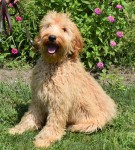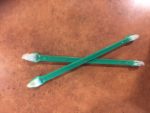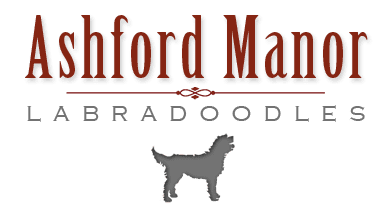Dental hygiene for dogs is often overlooked, but is an important factor in their overall health. Veterinarians report that an estimated 85 percent of dogs over age 4 are suffering from some form of periodontal disease, a painful oral condition that can lead to tooth loss and infection. However, all of these problems are preventable if you give your Australian Labradoodles regular dental cleanings and take him for yearly professional checkups.
Products Needed to Clean Your Pet’s Teeth
Doggie toothbrush – You can choose to use a human toothbrush to work on your dog’s teeth. Just make sure to choose one that is
soft and in a size that matches your dog’s mouth. If you rather get a brush specifically for your pooch, they do have canine brushes which are more angled than a regular toothbrush or a fingertip style, which slips over the end of your finger. You may have to try each type before finding the right fit for both you and your dog.
Canine toothpaste – Make sure to get a toothpaste that is safe for your pup to swallow. They come in flavors your pet is sure to like, such as poultry or seafood. NEVER use a human toothpaste formula for your dog.
Wipes or Pads – If you do not have time for a full brushing, you can get a canine dental pad, or gauze pad and wipe your dog’s teeth along the gum line. This is where most bacteria and food will sit.
While brushing is definitely recommended, there are products out there that will help your pup keep their teeth clean. Giving your dog a natural choice like a rubber or nylon toy with a rough or bumpy surface. You can also try giving your dog crunchy food and chew treats approved by the VOHC (Veterinary Oral Health Council) to help reduce build up.
Time to Brush!
Dental care should be just as common as taking your Australian Labradoodle to be groomed or outside for a walk. It is something that should be done 3 or 4 times a week, if not every day. Although, it may not come too easily! Ideally, brushing should be introduced to your pooch as a puppy, but that does not mean it’s too late to start.
 First, you’ll want to spend time handling your dog’s mouth. Try putting a special treat, like peanut butter, on your finger. Let him lick at your finger while you gently rub his or her teeth and gums.
First, you’ll want to spend time handling your dog’s mouth. Try putting a special treat, like peanut butter, on your finger. Let him lick at your finger while you gently rub his or her teeth and gums.
Second, you’ll need to get your dog used to you handling his muzzle. Place each of your hands on the top and bottom of his mouth and let your hands rest for a few seconds. Once your dog is ok with this, try parting his lips and then gently opening his jaw.
When your dog seems ok with you working in his mouth, find a time of day when it’s quiet or your dog is the most calm and bring out your brushing supplies. Here are suggestions on making the process easier:
- Let your dog sniff and lick the toothpaste and toothbrush
- Move your dog’s lips aside; rub the visible teeth with either your finger or toothbrush
- Gradually increase the number of teeth you brush, and remember to reapply toothpaste, as needed. Make sure to brush along the gum line in a circular motion as this is where food and bacteria can sit.
- If things are going well after a few days, gently open his jaw to brush the back teeth. If it’s too difficult to brush the insides of your pooch’s teeth, focus on the outside as that is where periodontal disease is more common.
- Conclude brushing with a special reward – play, treat or affection – even if the process doesn’t go well. This will form a positive association with brushing.
While brushing at home is great, it’s a good idea to take your dog to the veterinary dentist as well on a yearly basis.
Know when to throw away your Australian Labradoodles toothbrush as well. When it gets  worn down or the bristles start falling out, it is time to order a new toothbrush.
worn down or the bristles start falling out, it is time to order a new toothbrush.
Ashford Manor cares about your dogs health!
Source: www.animalplanet.com
Article: Dental Care for Dogs – Tips and Tricks
Cheryl Sabens
Ashford Manor Australian Labradoodles
Australian Labradoodle Breeder
Home of the non-shedding dog
765-714-1436

Recent Comments